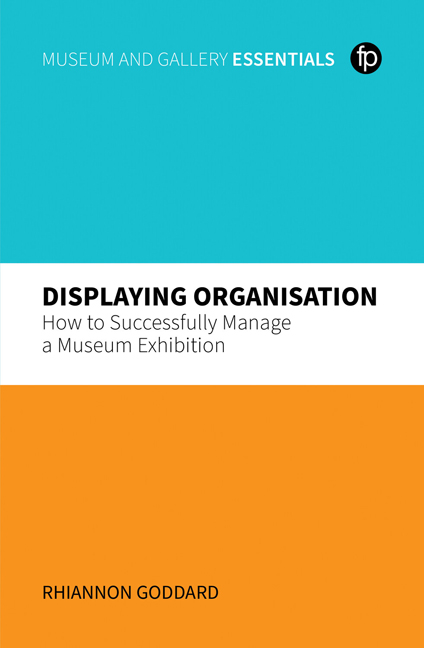Book contents
- Frontmatter
- Dedication
- Contents
- Figures, Tables, Boxes and Case Studies
- About the Author
- Acknowledgements
- Introduction
- PART 1 DEFINING THE PROJECT
- PART 2 PLANNING THE PROJECT
- PART 3 EXECUTING THE PROJECT
- PART 4 TRANSITION
- PART 5 EVALUATING THE PROJECT
- PART 6 KEY PROJECT MANAGEMENT SKILLS
- Bibliography
- Index
4 - Bringing the Designers on Board and Creating a Concept Design
Published online by Cambridge University Press: 14 October 2023
- Frontmatter
- Dedication
- Contents
- Figures, Tables, Boxes and Case Studies
- About the Author
- Acknowledgements
- Introduction
- PART 1 DEFINING THE PROJECT
- PART 2 PLANNING THE PROJECT
- PART 3 EXECUTING THE PROJECT
- PART 4 TRANSITION
- PART 5 EVALUATING THE PROJECT
- PART 6 KEY PROJECT MANAGEMENT SKILLS
- Bibliography
- Index
Summary
Introduction
In this chapter we will look at how to appoint the designers and what they will need in order to produce the concept design for the exhibition. The chapter doesn't provide a full description of all the tasks that need to be undertaken, but is an outline that will help you to understand what needs to be done and the key moments you will need to add to the project plan. By the end of this chapter, you should have a good understanding of the point where the exhibition process transitions from planning into execution, and you will know how to brief the key external staff that you will need to bring in to your project.
Appointing designers
The expertise that most often needs to be sought externally is that of designers. To create an exhibition, you generally need three or four types of designer: those who will create the structures and set works to display objects (3D designers); those who will design all your graphics (2D designers); someone who will develop any AV for you; and lighting design. Sometimes this expertise comes together in the form of a design company, but quite often you will need to recruit creatives from different sources to put together the exhibition. The 3D designers will design a wide range of things to make an exhibition come to life, from the positions of showcases in the room and the layout of objects within them and the label holders, to large pieces of set works that will create the environment for the exhibition. These set works can be as varied and extensive as your budget and space allows. The 2D designers will help you to choose fonts, colours and style for the graphics. The graphical language of an exhibition is very important in helping to set a tone and atmosphere for the display. Just think about the influence of graphics on our lives, such as the distinctive London Underground font, or the choices we make when creating presentations. AV needs will be driven mainly by the content and interpretation plan, while lighting will be crucial to displaying the objects, quite literally, in the best light.
There are a number of approaches to bringing a designer on board. You may choose to bring them in early in the process to be part of the discussions about the overall vision for the exhibition.
- Type
- Chapter
- Information
- Displaying OrganisationHow to Successfully Manage a Museum Exhibition, pp. 67 - 74Publisher: FacetPrint publication year: 2023



